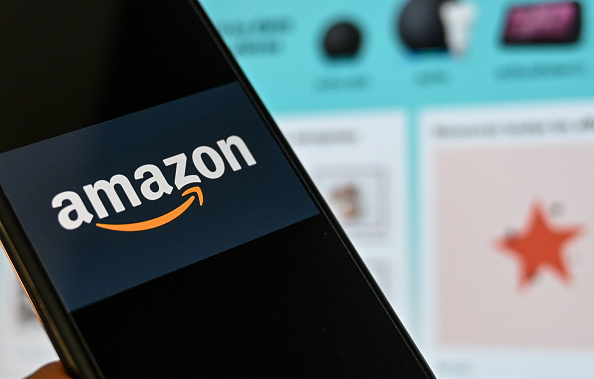The first lesson of business is on the importance of a unique selling point. Without this, success is tough. Unfortunately, it’s so often overlooked. If you’re entering a crowded market, it can be terribly difficult to find one aspect of your brand that isn’t replicated among the competition.
Fortunately, as part of the ‘Essential Business Tips’ series, Innovate UK can offer some insightful tips on defining your unique selling point.
The consumer
When it comes to understanding what makes you different, look to your audience. A solid appreciation of why they’d come to your brand is imperative. If you don’t know why your customer is shopping within your chosen market, you’re not looking hard enough.
Here’s what you should know:
- Do they buy your product/service from a competitor?
- Can your brand actually fill a gap in the market?
- What is your niche?
- Are you aiming for a B2B or B2C audience?
- What channels can you approach/market to your consumer?
A perfect unique selling point is from Mr Porter. The brand understands exactly how to speak to the modern man about fashion in a way he’ll listen. Consider their editorial, The Journal. these articles don’t openly discuss fashion in the way its Net-A-Porter female counterpart does. Instead, the writers focus on the lifestyle of the modern gentleman, much in the way GQ would. When discussing fashion, there’s always a more practical and everyday approach to the writing. To illustrate this, consider their article ‘The Best Weatherproof Shoes’ or ‘How To Throw A Really Posh Party’.
The problem
One of the best USPs to possess is the resolution to a problem. If you can lift the burden of a tough everyday task, activity or process then you’re likely to get a lot of attention. One potential problem with this approach is coming up with a solution for a problem which isn’t really there. This will ruin any chance of success you have.
So, you’re stuck somewhere you don’t know, you need a cab but can’t find any and you’ve run out of cash. Go back a few years and this would be a serious problem. Today, you have Uber. It’s no surprise Uber are taking over the public transport industry – you can order a cab with a few taps on your phone and there’s no need for cash. This is a brand that saw a problem and stormed the market with their solution. Since then, a number of competitors have cropped up with their own niches, such as ordering black cabs on demand.
The benefits
There’s a huge difference between telling your customer about your product and telling them what they can do with your product. Demonstrate and communicate the unique benefits that appeal directly to your consumer. Explain what it can do for each individual.
To illustrate this, we’re going back in time a little to talk about some vintage Apple. Apple didn’t market the iPod in line with its competitors. Other companies were purely listing features. Apple instead led with one key tagline to sell this device; ‘1,000 songs in your pocket’. The truth is, some other devices could probably offer the same, but it was the personal delivery of this message that created the USP.
The competition
You could be offering a wonderful product, but you’ll be wiped out if there’s another business doing the same thing – especially if they’re local.
Take a look at the competition first. It’ll help you identify what you can do differently. Note what their key products and/or services are, what customers like or dislike about them in reviews, their marketing output and how much they charge for products. Any of these could be your ‘in’.
Remember that your customer always comes first, so try and think about what they want from you and your competitors. What are they looking for from them that you could do better?
Let’s say you want to open a hairdresser. If there are any other hairdressers in your town, or any surrounding towns, get to know their services and prices. Ask yourself the following questions:
- What services do they offer?
- What are their opening times?
- How experienced are their stylists?
- How many hairdressing stations do they have?
- What equipment and hair care brands do they stock?
- What is their décor and aesthetic like?
Any of these could give you ideas about how to run your own hairdresser. Perhaps you could offer services that increase in cost according to the experience and specialities of the stylists or, if you have the space, you could have more stations and offer a cheaper express option.
The validation
Nothing validates your idea better than paying customers. Whether it’s payments, subscribes or downloads, these numbers demonstrate a demand in the market. This is especially useful when you’re looking for investment. So, get out there and get your brand’s name heard.
Encourage shoppers to give your business a review on Google as well – this creates brand loyalty and can stand to push your USP further. If you don’t already, get your company on Google My Business.
Further reading on your unique selling point
Eight types of USP worth considering
Here we list some examples of how a small businesses can define their own unique selling proposition. You could concentrate on one particular point of difference or it could also be a combination of types. Remember, the overriding consideration is how you want to be positioned in your target market, so it needs to be something core to the philosophy of your business – something you can be be proud of and therefore be able to maintain in the long-run.
- Unique feature – One of the harder USPs to justify, but if you genuinely provide a totally unique product then that is the one to go for.
- Niche – Having a smaller but more dedicated (and potentially more lucrative) audience could see you well here. For example, doing web design exclusively for business clients.
- Process – How you do what you do. Is the way your product is made, or your service, delivered a point of differentiation that both you and your customers admire? That could be the way to go.
- Personal brand – One of the main advantages of using your own personality as a USP is that it is difficult for competitors to copy. It’s a good choice if you have: already attained existing ‘authority’ in your industry or sector; a personal ‘signature style’ that people associate with you; or perhaps a compelling background story that dovetails nicely with your product / service. Be careful if choosing this one that it conveys clearly the benefits to the target audience.
- Location– The service may not be unique, but if you are the only business doing it in your geographic area, that can be a very strong offer or messaging opportunity for you.
- Customer service – Things like 24/7 support, call back requests and responses within a certain time period are increasingly seen as standard, so don’t base your USP on them. However, offering a particular service as standard that competitors don’t could give you the edge. For example, a subscription service that will give customers their first box for free.
- The bundle – Perhaps you can offer a combination of service and/or product that is difficult for anyone else to replicate. Before exploring this as a USP make sure there is consumer demand for the mix you plan to offer.
- Guarantee – A USP type that you can often combine with one or other of the types listed above. A guarantee can be crafted such as to be something very difficult for competitors to match.





